The more interesting cross-platform gaming projects are released, the more popular PC gaming with joysticks and gamepads gets. Just remember Gears of War, Lost Planet and even the coming Assassin’s Creed III, whose developers advise even PC users to play their brain child with a gamepad instead of a mouse and a keyboard. Therefore, gamers face a dilemma: get the cheapest gamepad or approximate the gamepad-using experience to consoles. By the way, modern consoles come with wireless gamepads. This very type of device – SVEN Combat wireless gamepad with vibration feedback – we’re going to deal with today.
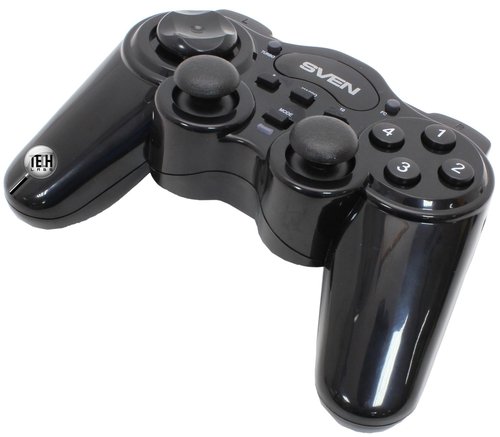
Design and Ergonomics
The “combating” gamepad comes in a traditional blister pack, allowing to fully estimate its design and ergonomics. The pack includes a software CD, a detailed operation manual in several languages, including English, the gamepad itself and its receiver.
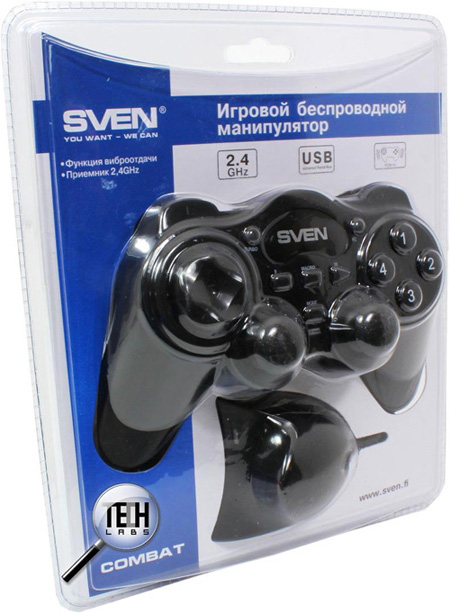
In appearance, SVEN Combat resembles a PlayStation 3 gamepad with its classical proportions, key layout and glossy surface. The grips, the top and bottom are glossy, except for the surface of buttons. Fingerprints are visible on the surface, but they don’t attract too much attention. A more serious minus is slippery surface: it isn’t very convenient to hold the joystick in wet hands. The shape and grip are very elaborate, the size of handles is a little larger than a PlayStation joystick has, convenient to hold in middle-sized and big hands.
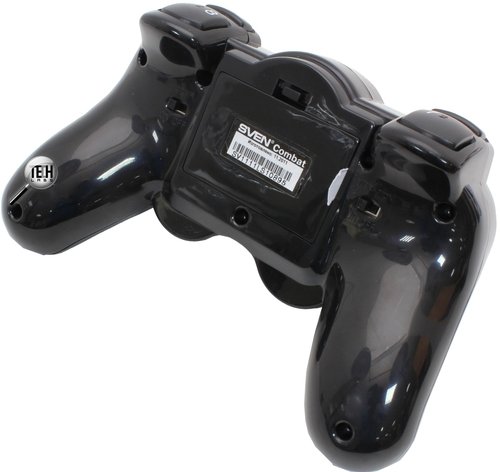
The gamepad has quite sensible weight. In this respect it stands closer toXbox 360 joystick which, unlike the PlayStation 3 joystick, operates on AA batteries and has built-in vibration feedback. Here we come up to the principal feature of the device – it’s supplied with batteries not a single wireless gamepad would operate without. In SVEN Combat, they are located in a special compartment under the cover. They’re quite easy to install and withdraw. However, their quantity and size are rather unusual – 3 AAA batteries. Two AA batteries would look more logical, as they’re easier to replace with storage batteries. Next to the battery compartment, there is a power switch – an ordinary slide switch. An identical switch allows the user to switch the vibration feedback on and off.
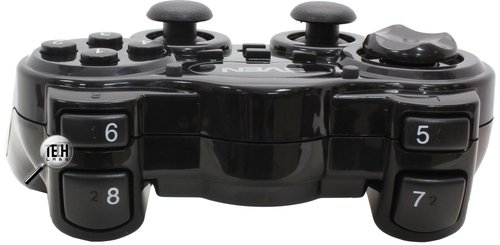
Let’s pass on to buttons and keys. At first sight, the set seems standard, but there is a number of peculiarities. First, the eight-position D-pad is unusually shaped with a dip for the left thumb. The analog sticks are made rough and rubberized – they provide excellent cohesion, so that even sweaty hands don’t slip. The usual Select and Start are hidden under numbers 9 and 10, and additional buttons are named Macro, Mode, FC and Turbo. Under the Mode button, there is a LED indicator. The triggers are also numbered and stand out from the case just a little. Their surface is matt, not glossy like the rest of the case.
Playing
After installing the batteries, you can connect the gamepad to the PC. Actually, drivers are not necessary for Windows XP and higher, but a software CD is still included. Vibration feedback isn’t guaranteed without drivers’ installation in XP OS. To connect the gamepad and the receiver, you should switch the device on and press FC button first on the receiver, and then on the gamepad. After connecting, you can calibrate the axes and adjust the vibration feedback force from 0 to 100%.
The declared 2.4 GHz receiver coverage range – 7 m. – is absolutely true, there is no malfunction even at such long distance.
The Mode key switches between the analog and digital modes. In the digital mode (the LED under Mode button lights up green) there are two axes and a D-pad available, though in the analog mode (red LED) all the four axes and 12 buttons are available. Turbo button is responsible for continuous firing (or other action). In addition, you can choose a button to assign this function: you just need to press Turbo while holding this button down. Another curious feature is reprogramming of buttons, it’s activated with Macro key.
In general, the gamepad does very well in the game. The analog sticks are highly sensitive and accurate, the buttons are pressed well, and only the triggers, in our opinion, are weakly pressed and sink too much into the case. The vibration feedback is very good, and its fine adjustment is quite suitable. As for the brand features, such as Turbo button and switchable modes – some gamers will certainly find them useful, but for most of them, it’s enough to see that the gamepad is high quality, wireless and classically ergonomic.
Conclusion
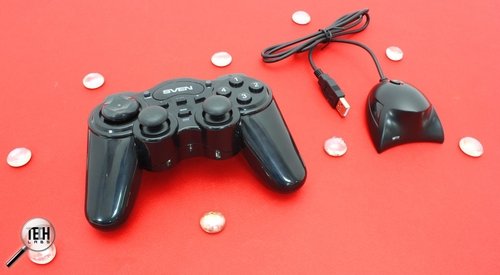
SVEN Combat is a high-quality gamepad with good analog part, excellent connectability and errorless ergonomics. Its standard set of functions is supplemented with uninterruptible firing option you can assign to any button, reprogrammable keys and switching between the digital and analog operation modes by means of hardware. The gamepad would suit novices, though it would also satisfy professionals with high-quality assembly and comfort during the game!
